The author recounts the conclusion of a cattle-killing tiger’s reign of terror in Bengali India.
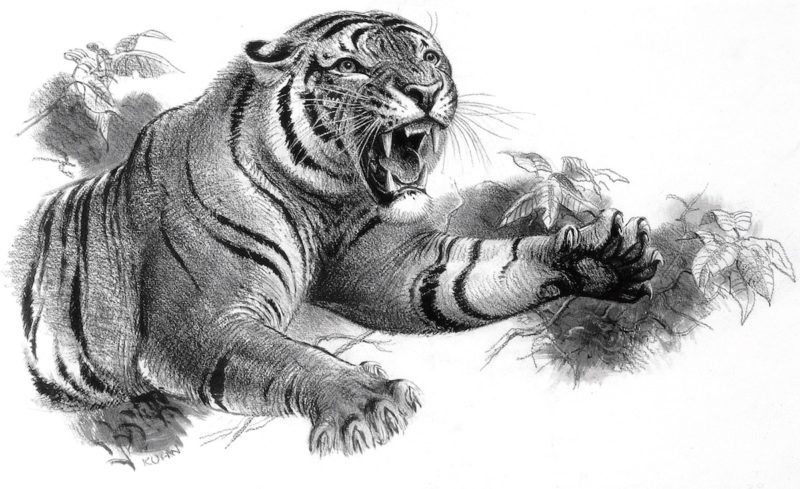 The howdahs being placed in position, so that each should command a portion of the comparatively open ground between the jungle to be beaten and the one beyond, the beat commenced. The beating elephants had advanced about halfway through the dense cover when a loud trumpeting and squealing, together with the shouts of the drivers, announced the glad news of the tiger’s presence.
The howdahs being placed in position, so that each should command a portion of the comparatively open ground between the jungle to be beaten and the one beyond, the beat commenced. The beating elephants had advanced about halfway through the dense cover when a loud trumpeting and squealing, together with the shouts of the drivers, announced the glad news of the tiger’s presence.
A few minutes later a quick, sinuous movement in the grass was observed some 20 yards in front of the left howdah, and presently the head and shoulders of a huge tiger showed for an instant. The next instant, with a roar of defiance and rage at seeing his retreat cut off, he had turned sharp to the left and was galloping through the grass parallel to the howdahs, roaring as he went.
The pace he was traveling at, and the close assimilation of his black and yellow markings to the lights and shades of the surrounding jungle, made him anything but an easy target.
He was fired at from each of the three howdahs as he passed them, but held on, evidently untouched, and would have gained the shelter he was seeking, but to do so he was forced to cross a small patch of open, about 80 yards in front of the last howdah. As he reached this spot, G——, who occupied it, and who was probably the safest rifle shot in Bengal, aiming a full length ahead and on the ground line, fired, rolling him over in his tracks.
It was a beautiful shot, yet so fast was the tiger going that even with the allowance made, the bullet, as they subsequently discovered, struck well behind the ribs.
Picking himself up at once, the tiger stumbled on and, gaining a thick bit of wild plum jungle, disappeared into it. The howdahs were now quickly posted on the further side of this cover, the beating elephants being directed to drive the tiger out to them.
Slowly and cautiously the line advanced, each elephant seeming to scent danger in every clump that lay before him. Shoulder to shoulder, like a moving wall, they gradually made their way, leaving the jungle flat behind them as they passed. Suddenly a low rumbling as of distant thunder was heard on the right, followed by squeals and trumpeting all along the line.
The next moment, with a roar that could be heard even above the din created by the elephants, the tiger was upon them. The suddenness and ferocity of the attack was more than elephant nature could withstand, and with one accord the “line” turned tail and fled with the tiger in pursuit, biting and clawing any of them he could reach!
But whether too badly wounded to continue the attack or satisfied with the rout he had accomplished, he soon gave up the chase and, returning to the cover whence he had come, lay up again, showing his rage and disapproval in a series of savage growls.
Again and again was an attempt made to drive him to the howdahs, but always with the same result, till at last all but two of the staunchest of the “line” refused to approach him.
The struggle had continued for about an hour, and as there seemed no immediate prospect of surrender on the tiger’s part nor any likelihood of his succumbing to his injuries, it was determined to attack him in his stronghold with the howdah elephants — a fairly perilous undertaking considering the state of his temper and the position he occupied!
But matters were getting serious, and the sun unpleasantly warm. The howdah elephants and two staunch tuskers aforesaid were accordingly formed into line and advanced cautiously into the cover.
No sooner had they entered than they were greeted by a roar so appalling in its ferocity that the three elephants carrying the Forest Officer and the planters turned tail and fled incontinently, nor in spite of all threats and inducements could they be persuaded to return to the attack. G—— and the two tuskers were accordingly left to carry on the fight as best they might.
Their position was anything but an enviable one, for the tiger, whether tired out with its previous exertions or awed by the gleaming tusks and bulky proportions of the tuskers, now changed its tactics, and instead of charging out as before, remained concealed within the dense cover, its occasional growls alone indicating its whereabouts.
Several attempts were made to force a charge, but without success. Finally one of the tuskers, an exceptionally staunch and powerful animal, was pressed slowly forward till nothing but a few leafy branches lay between it and the tiger. Then, with an indifference almost incredible under the circumstances, it seized, and gently pushed aside the branches with its trunk till a patch of black and yellow stripe was exposed to view.
G——, who had been directing this very dangerous operation, quickly seized his opportunity, and seeing that the tiger still refused to charge, fired a charge of No. 6s into the patch, hoping this might affect a change in the tiger’s position, and thus allow of a more certain shot.
The effect was instantaneous, but scarcely in accordance with the wishes or expectations of the sportsman, who had scarcely time to change his shotgun for the rifle when, with a mighty bound, the tiger sprung fairly on to the elephant’s head and, holding on with teeth and claws, remained clinging there!
Fortunately, the brave old elephant, in spite of this unwelcome addition to his load, stood like a rock, enabling G—— to take a steady aim at the snarling brute, now literally face to face with him.
The blinding flash and smoke that followed obstructed his vision for a while, but as the last cleared off he could see the tiger stretched out below him, gasping away the life he had so stubbornly defended to the end.
Lying there, extended to its fullest length, he was a sight to fill any sportsman’s heart with joy, and G——, who had shot many a tiger in his time — in fact, could count them by the score — gazed with wonder and delight at the huge proportions of the beast.
In the meanwhile the other elephants, thinking the tiger was still in pursuit, could be heard crashing through the jungle in their headlong flight, squealing and trumpeting in their terror. However, the three howdah elephants, being really staunch animals, soon recovered from their temporary scare and, yielding to the persuasion of their drivers, returned ready to renew the attack.
But the tiger was now dead, and the sportsmen, all eager to measure the enormous carcass, were soon around it, busy with the tape.
The measuring of a tiger is always an exciting moment, even when the animal appears to be of ordinary dimensions. Imagine then the excitement created by this monster, so obviously a giant of his tribe!
And such, in fact, he proved to be, for when the measurements were completed the following were the figures recorded by the tape:
- Length from tip of nose to root of tail: 7 feet
- Length of tail: 3 feet, 7 inches
- Total length from tip of nose to end of tail: 10 feet, 7 inches
- Height at shoulder: 3 feet, 4 inches
- Girth: 4 feet, 8 inches
- Upper arm: 2 feet, 1 inch
- Forearm: 1 foot, 7 inches
These measurements were tested with the greatest care, each of the sportsmen taking them in turn. Satisfied at length, though nonetheless amazed at the huge proportions of the beast, they resolved to weigh it before taking off the skin.
Most of the runaway elephants had returned by now, and the staunchest amongst them being selected was made to kneel beside the body. Two stout ropes were then passed round the tiger’s neck and loins, and their ends secured to two of the larger elephants.
As these animals obeyed the order to move forward the huge carcass rose slowly off the ground, and guided by some score or so of the drivers from below was finally placed across the pad of the kneeling elephant.
This patient animal, which had been kept on its knees throughout these lengthy proceedings, was now permitted to rise, and with its heavy and most unwelcome burden, headed the procession to the tea garden adjoining.
On arrival at the factory, the body of the tiger, doubled up as far as possible, was placed on an enormous pair of scales, ordinarily used for weighing tea leaves, and was found to weigh 419 pounds. Such a weight, considering the length and great bulk of the animal, was so obviously out of all proportion to its size that it is probable the weights were wrong, or that the scales, which had not been tested for some months, were inaccurate.
However, be this as it may, there was certainly no mistake about the measurements, which, if they did not actually constitute a record, could not have been far short of it.
 Many coolies and others from the adjacent tea garden and villages had followed the procession to the factory, amongst them several veterans who, living on the borders of the forest, had seen many a tiger in their time, both alive and dead, and all agreed that this was by far the largest they had ever seen or heard of.
Many coolies and others from the adjacent tea garden and villages had followed the procession to the factory, amongst them several veterans who, living on the borders of the forest, had seen many a tiger in their time, both alive and dead, and all agreed that this was by far the largest they had ever seen or heard of.
An excerpt from Tigerland: Reminiscences of Forty Years’ Sport and Adventure in Bengal, published in 1913.
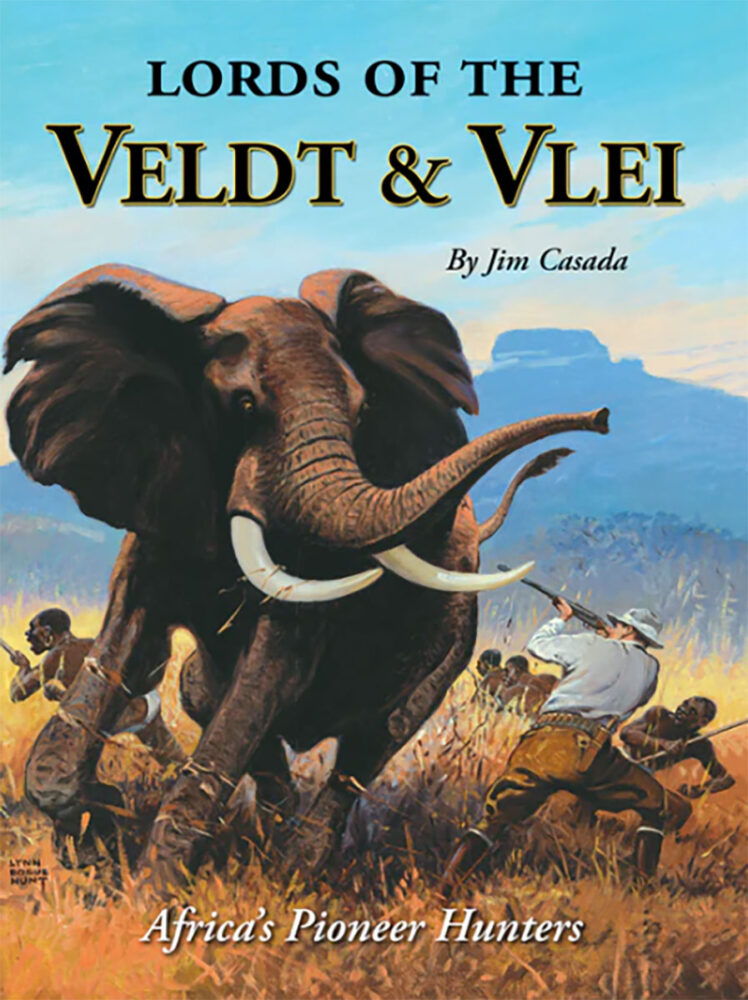 Well into the 19th century, most of the interior of tropical Africa was terra incognitae. Aptly styled the “Dark Continent,” wildest Africa was unknown, unexplored and unhunted. With the dawning of the Victorian era, however, all that changed. Driven by the allure of incredible hunting opportunities and the opportunity to win lasting fame through geographical discovery, intrepid individuals sought fame and fortune in the vast area where ancient maps carried notations such as “here be dragons.” Buy Now
Well into the 19th century, most of the interior of tropical Africa was terra incognitae. Aptly styled the “Dark Continent,” wildest Africa was unknown, unexplored and unhunted. With the dawning of the Victorian era, however, all that changed. Driven by the allure of incredible hunting opportunities and the opportunity to win lasting fame through geographical discovery, intrepid individuals sought fame and fortune in the vast area where ancient maps carried notations such as “here be dragons.” Buy Now
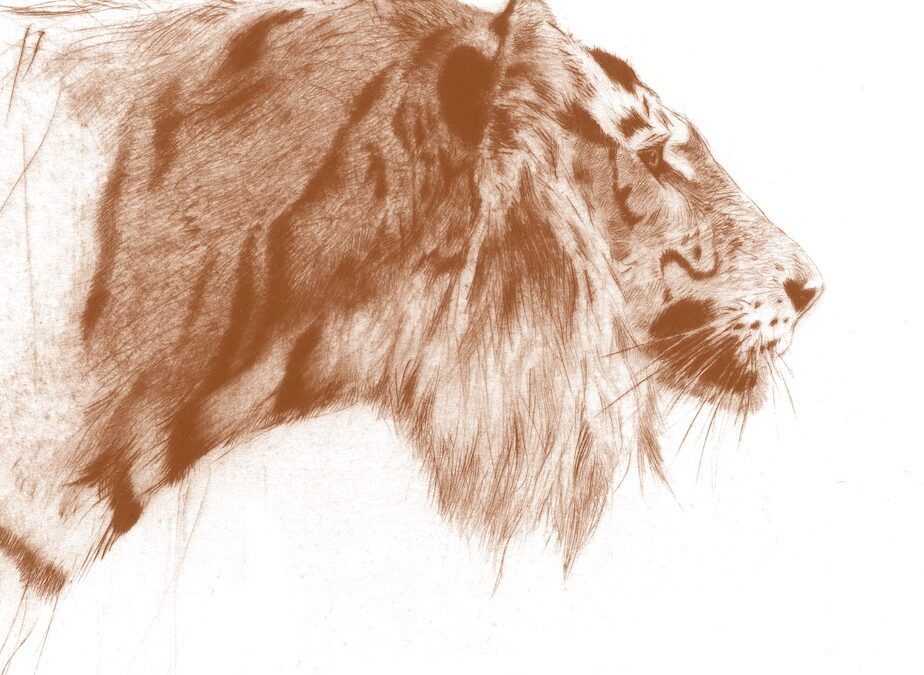
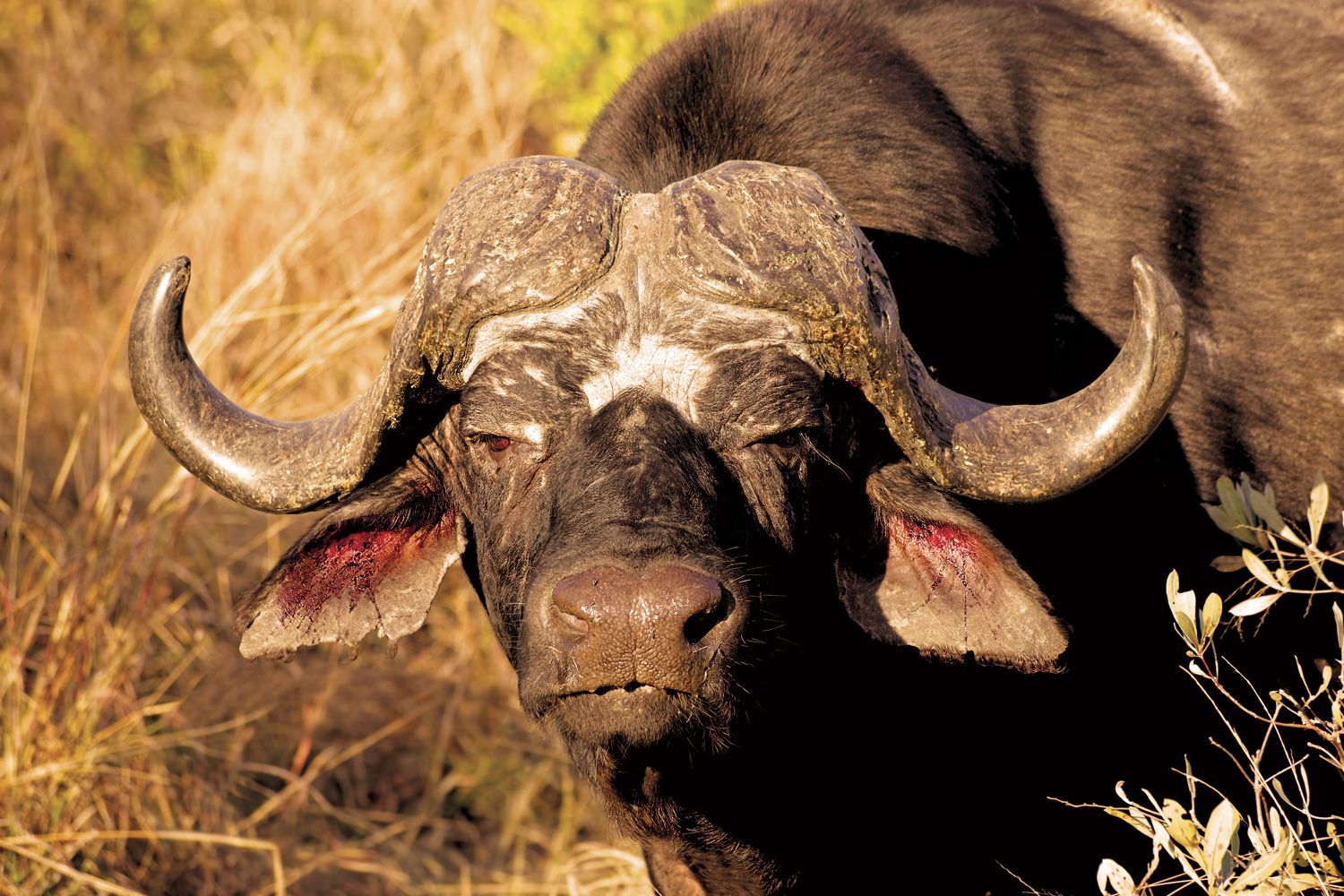
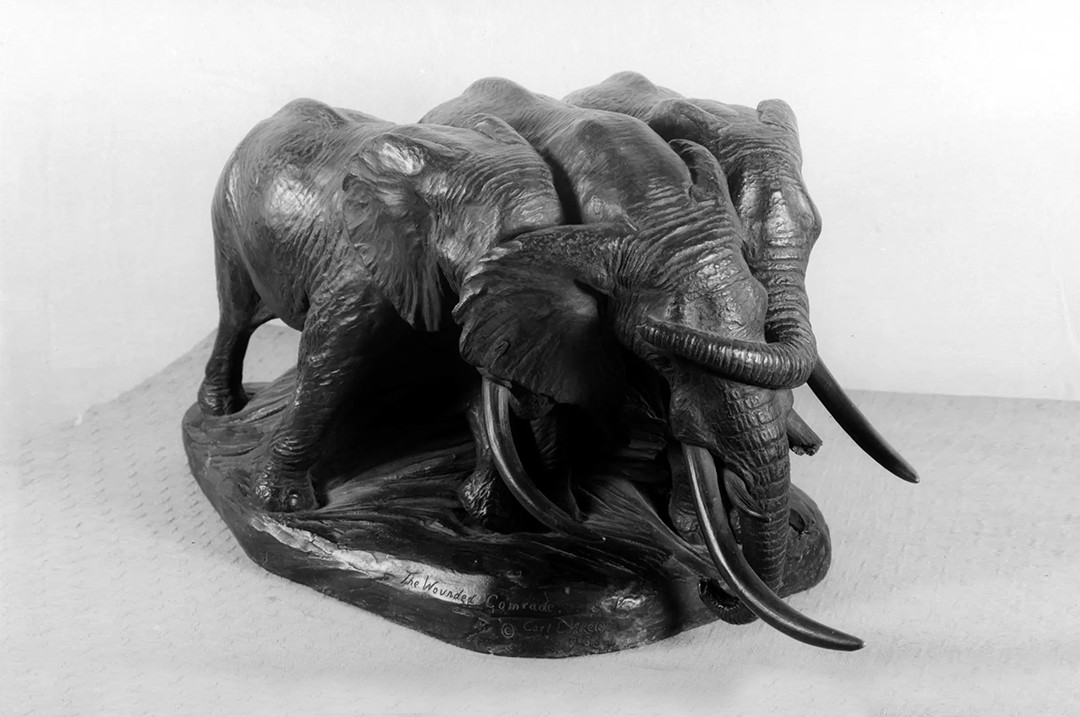
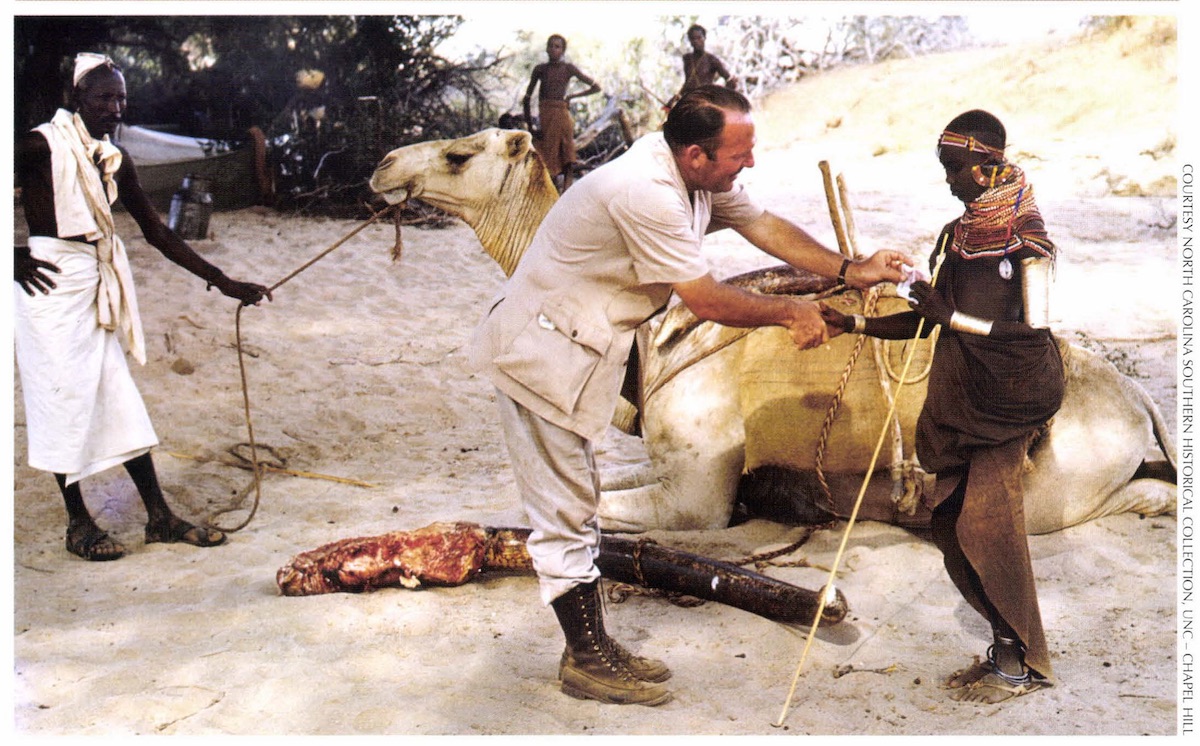
Sad that tiger habitat loss and poaching have endangered this magnificent creature to the point that population management that includes hunting is no longer possible. Imaging the economic boom that legal hunting hunting (travel, hotels, food concessions, trophy fees, professional hunters, guides, camp staff, etc.) could bring to some of the most impoverished area of former tiger territory. If this ever happens, it will be through the efforts of sportsmen & women, not through the hand wringing radical tree huggers.